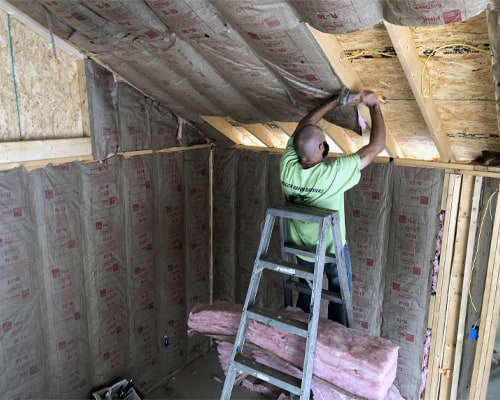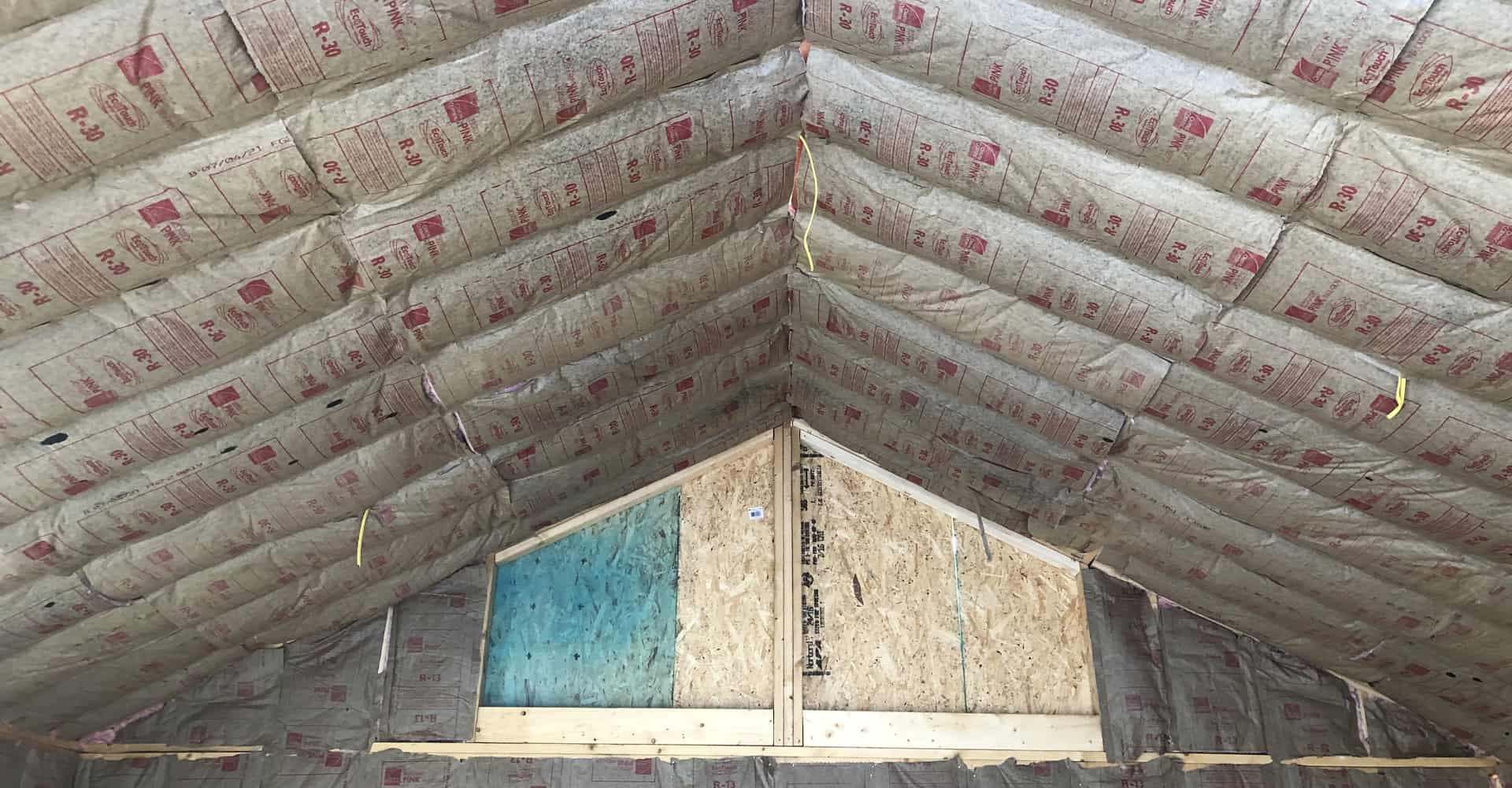How much insulation do I need in my attic?
One of the easiest ways to cut your energy bills is to make sure your house is properly insulated. Your attic is possibly the easiest area of your house to add insulation to and, unless you live in a newly constructed house, is almost guaranteed to need more than it currently has! This sort of home improvement project can be quite the chore if you choose to go DIY, to get the best results you should let a professional like Dragon Vapor Barriers help install your new home insulation.
How do I know if I’ve enough insulation in my attic to begin with?
Checking to see if your attic has enough insulation is usually as simple as taking a peek into your attic! If you can see the ceiling’s floor joists then that is a clear sign that you will see benefits from adding more insulation to your attic.
If you can’t see your joists you should take a ruler and check the depth of your insulation. The exact depth you’re looking for will vary depending on what sort of insulation material you’ve got. Don’t be surprised if you find that your attic is underinsulated – a study conducted in 2016 determined that 90% of homes in the United States don’t have the recommended amount of insulation.

How do I Calculate how much attic insulation I need?
To determine how much insulation your attic needs, you’ll need to know just three things:
- What climate zone you live in
- What type of insulation you have / will be adding
- How much insulation you currently have
Dragon Vapor Barrier’s hometown of Columbia, SC is located in climate Zone 3. This climate zone typically experiences hot summers and moderate winters, and is shared across the south, excluding Florida and Southern Texas.
For Zone 3 the U.S. Department of Energy recommends an attic R-Value between R-30 and R-60. Depending on the type of insulation you’ve currently got, the exact number of inches of insulation will vary.
To determine your existing R-Value you’ll need to measure the depth of your insulation from the top of the insulation to the attic floor. Next, you’ll multiply that depth in inches by the R-Value of your particular insulation.
Common insulation types and their R-Value:
Appearance |
Types of Insulation |
R-Value Per Inch |
| Loose fibers (Pink, white, or yellow) | Loose-fill Fiberglass Insulation | 2.5 |
| Lightweight granules | Perlite or Vermiculite | 2.7 |
| Dull white/grey, possibly with black speckles | Mineral wool | 2.8 |
| Thick sheets of pink, white, or yellow fibers | Fiberglass Batts | 3.2 |
| Flat grey pieces or fibers | Cellulose insulation | 3.8 |
*Other types of insulation include spray foam insulation, which is often applied to the ceiling of your attic. It can be difficult for homeowners to tell how much of this insulation is present, however, Dragon Vapor Barriers offer free attic assessments.
Once you know your attic’s existing R-Value you’ll be able to determine how much additional insulation you’ll need by subtracting your existing R-Value from your desired R-Value and then dividing by the R-Value rating of the insulation you’ll be adding.
Number of inches of new insulation required = ( [Desired R-Value] – [Existing R-Value] ) / [R-Value of New Insulation per Inch]
So, if you have 5” of depth of fiberglass batt insulation then your current insulation has an R-Value of 16 (5 x 3.2=16). If your target R-Value is R-35, then you’ll need to add another R-19 of insulation, or ~6” of fiberglass batting (19 / 3.2=5.94).

What is R-Value?
R-Value measures the heat flow through a building material. Put simply, a higher R-Value provides greater insulation. When insulating your house, keep in mind that your insulation R-Value is only part of the story; air leaks can reduce your home’s energy efficiency.
Different climates have different recommended levels of insulation. Columbia, SC is situated in Zone 3 and the recommendation is between R-30 and R-60. You can save money from your AC and heating bills by insulating to the higher end of this spectrum – but a higher level of insulation will come at a greater initial cost.
Conclusion
Insulating your attic is almost guaranteed to help with energy savings and reduce your utility bills. In some cases it can be easy to tell if you need more insulation, but oftentimes determining how much more you need is a bit of a chore. If you’re in the Columbia SC area and aren’t sure how much insulation you need, Dragon Vapor Barriers offers free attic inspections. Schedule your own inspection now to start saving money off your utility bills ASAP!
